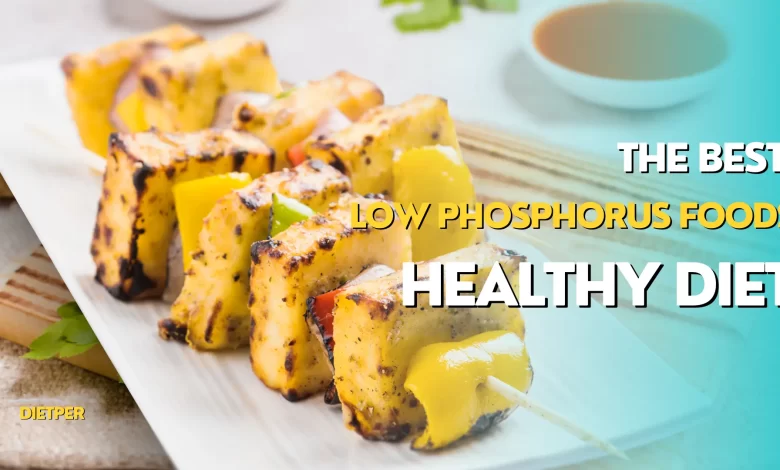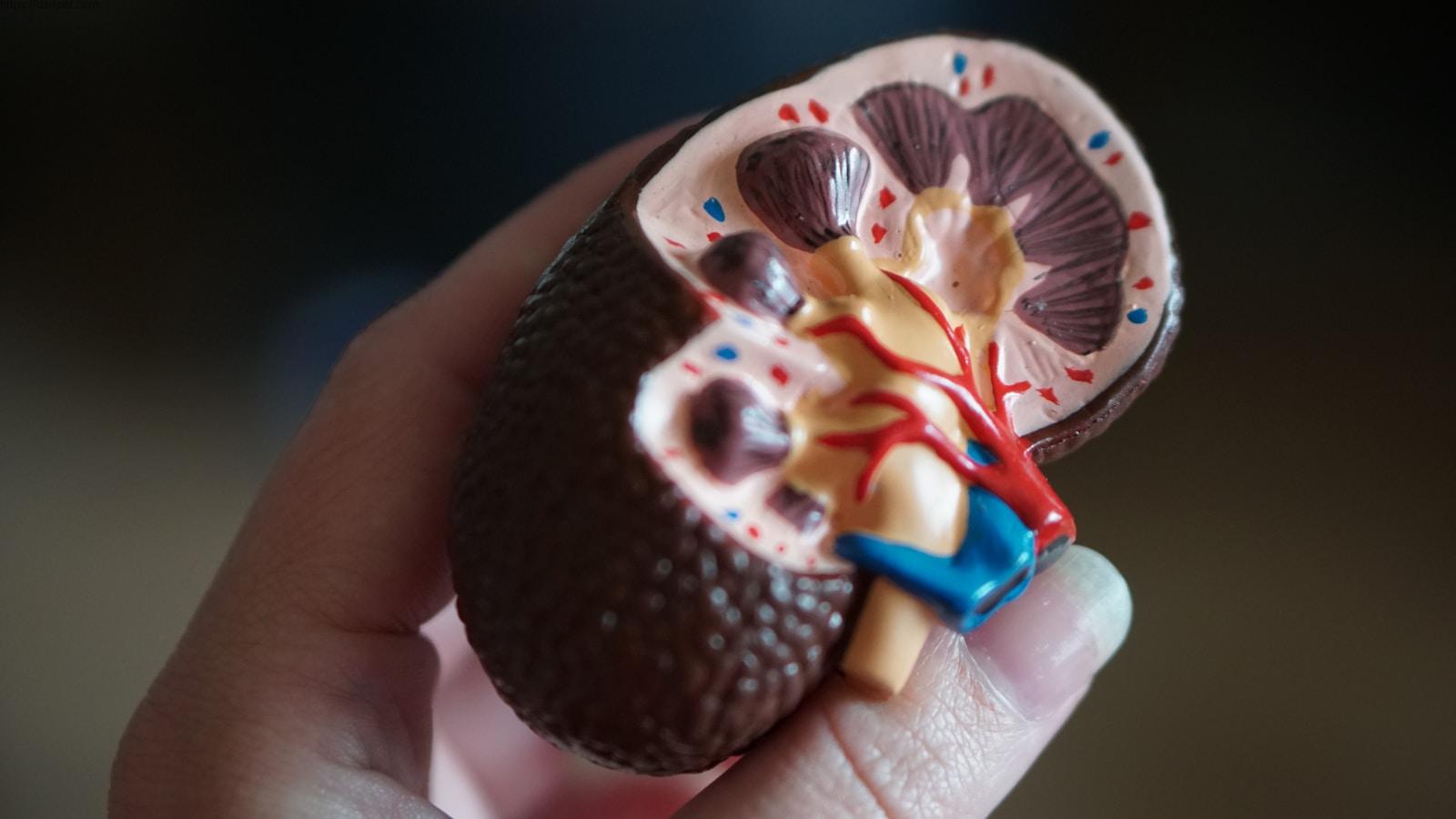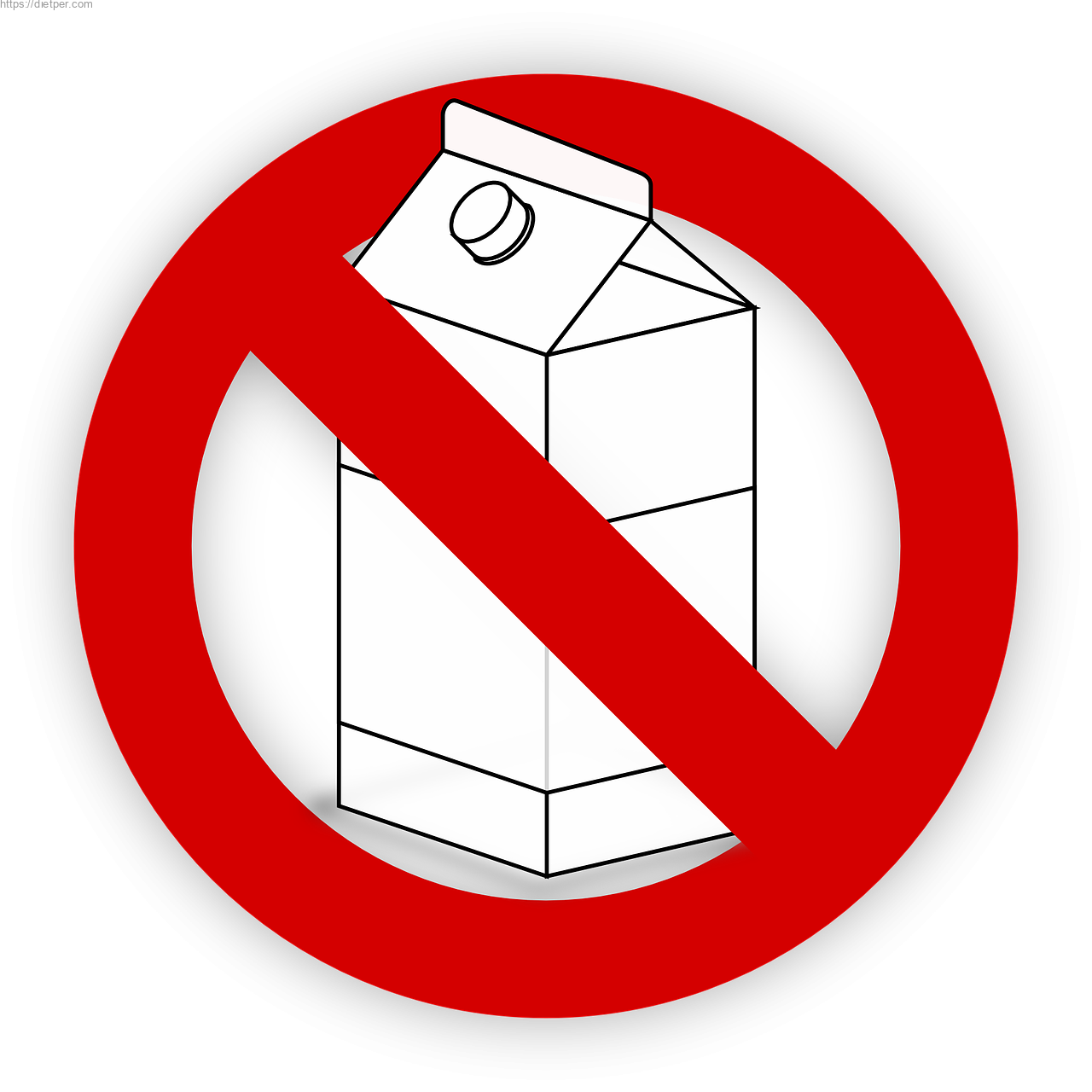Low Phosphorus Foods: A Guide to Managing Phosphorus Levels in Your Diet
Discover the Best Low Phosphorus Foods for a Healthy Diet | Expert Tips

Low Phosphorus Foods :- Managing phosphorus levels is of utmost importance for individuals with kidney concerns, especially those grappling with chronic kidney disease (CKD). The intricate dance between dietary choices and kidney health can significantly impact overall well-being. In this comprehensive guide, we delve into the realm of low phosphorus foods, exploring their significance, strategies for quick reduction, foods to embrace or avoid, and practical tips for crafting a kidney-friendly diet. Whether you’re seeking to create a personalized meal plan, dine out with confidence, or understand the role of supplements, this guide equips you with the knowledge to navigate the low phosphorus foods landscape with confidence and care.
Low phosphorus foods for kidney patients
Low phosphorus foods for kidney patients are essential to manage phosphorus levels and prevent complications. These foods typically include fruits like apples and berries, vegetables such as cabbage and peppers, rice, pasta, and certain bread. Additionally, choosing dairy substitutes and lean protein sources with lower phosphorus content is recommended. Patients should work closely with a dietitian to create a personalized meal plan that meets their nutritional needs while adhering to phosphorus restrictions.
How to lower phosphorus quickly ?
Lowering phosphorus levels quickly is a critical concern for individuals with kidney issues, especially those with chronic kidney disease (CKD). Elevated phosphorus levels can contribute to complications such as bone and cardiovascular problems. Here’s a detailed explanation of strategies to rapidly lower phosphorus levels:
- Immediate Dietary Changes:
- Phosphorus-Restricted Diet: Following a low-phosphorus diet is essential. This involves avoiding high-phosphorus foods, such as dairy products, nuts, seeds, and certain grains.
- Processed and Fast Foods: Eliminate or significantly reduce the intake of processed and fast foods, as they often contain phosphate additives that contribute to high phosphorus levels.
- Increase Fluid Intake:
- Water Consumption: Adequate hydration is crucial for kidney health. Drinking more water can help flush out excess phosphorus through urine.
- Lemon Juice: Adding lemon juice to water may be beneficial. Citrate in lemon juice can bind to phosphorus, potentially reducing its absorption.
- Phosphorus Binders:
- Prescribed Medications: Phosphorus binders are medications that bind to dietary phosphorus, preventing its absorption in the digestive tract. Taking these binders with meals can help lower phosphorus levels.
- Calcium-Based Binders: Calcium carbonate and calcium acetate are common binders. However, their use should be carefully monitored, especially in individuals with conditions that may lead to excessive calcium levels.
- Short-Term Fasting:
- Supervised Fasting: In some cases, short-term fasting under medical supervision may be recommended. This can reduce phosphorus intake temporarily and allow for better management.
- Dialysis:
- Hemodialysis and Peritoneal Dialysis: For individuals with advanced kidney disease, dialysis is a medical intervention that helps remove excess phosphorus from the blood. Regular dialysis sessions can contribute to rapid phosphorus reduction.
- Avoid Certain Medications:
- Avoid Phosphate-Containing Medications: Some medications, such as certain antacids and laxatives, contain phosphorus. Patients should consult their healthcare providers to explore alternative medications.
- Phosphorus-Lowering Medications:
- Prescribed Medications: In certain situations, healthcare providers may prescribe medications specifically designed to lower phosphorus levels. These medications often work by increasing phosphorus excretion through urine.
- Regular Monitoring:
- Blood Tests: Regular monitoring of blood phosphorus levels is essential. Frequent blood tests allow healthcare providers to assess the effectiveness of interventions and make necessary adjustments.
- Nutritional Counseling:
- Dietitian Consultation: Collaborating with a registered dietitian specializing in renal nutrition is crucial. They can provide personalized guidance, create meal plans, and ensure that nutritional needs are met while managing phosphorus intake.
- Lifestyle Modifications:
- Exercise: Regular physical activity may have benefits for kidney function and overall health. However, individuals should consult their healthcare providers before initiating an exercise regimen.
Low Phosphorus foods to avoid
For individuals with kidney issues, it’s crucial to be mindful of high-phosphorus foods to manage phosphorus levels effectively. Foods to avoid that are high in phosphorus include:
- Dairy products: Milk, cheese, yogurt
- Processed meats: Bacon, sausages, hot dogs
- Nuts and seeds: Almonds, sunflower seeds
- Colas and dark sodas
- Whole grains: Whole wheat, bran
- Shellfish: Shrimp, clams
- Chocolate and cocoa products
- Organ meats: Liver, kidney
- Certain legumes: Lentils, chickpeas
- Certain vegetables: Spinach, potatoes (especially with skin)
Low phosphorus food list
A low-phosphorus diet is essential for individuals with kidney concerns. Here’s a list of low phosphorus foods that can be incorporated into a kidney-friendly diet:
-
Fruits:
- Apples
- Berries (strawberries, blueberries, raspberries)
- Pineapple
- Watermelon
- Peaches
-
Vegetables:
- Cabbage
- Cauliflower
- Bell peppers
- Kale
- Zucchini
-
Proteins:
- Chicken
- Turkey
- Eggs
- Fish (white-fleshed, like cod or tilapia)
- Tofu
-
Dairy substitutes:
- Almond milk (unfortified)
- Rice milk (unfortified)
- Coconut milk (unfortified)
-
Grains:
- White rice
- White bread
- Plain pasta
- Cornflakes
- Rice cakes
-
Fats and oils:
- Olive oil
- Canola oil
- Margarine
-
Sweets (in moderation):
- Hard candies
- Sorbet
-
Beverages:
- Brewed coffee
- Herbal tea (without added ingredients)
High phosphorus foods
Individuals needing to manage their phosphorus intake, particularly those with kidney issues, should be cautious about high-phosphorus foods. Here’s a list of foods rich in phosphorus that should be limited or avoided in a low phosphorus foods diet:
-
Dairy Products:
- Milk
- Cheese
- Yogurt
-
Proteins:
- Organ meats (liver, kidney)
- Shellfish (clams, mussels, oysters)
- Salmon and other fatty fish
- Pork
- Beef
-
Legumes:
- Lentils
- Split peas
- Kidney beans
-
Nuts and Seeds:
- Pumpkin seeds
- Sunflower seeds
- Almonds
- Brazil nuts
-
Whole Grains:
- Bran cereals
- Whole wheat products
- Brown rice
- Quinoa
-
Processed Foods:
- Colas and dark sodas
- Fast food items
- Packaged and processed foods with additives
-
Baked Goods:
- Whole grain bread
- Pastries
- Biscuits
-
Chocolate and Cocoa Products:
- Chocolate bars
- Cocoa powder
-
Miscellaneous:
- Beer
- Cocoa and chocolate-based products
- Dried fruits (raisins, apricots)
-
Phosphorus Additives:
- Additives in processed foods (read labels for phosphorus-containing additives)
How to lower phosphorus levels in blood naturally ?
Lowering phosphorus levels in the blood naturally involves making dietary and lifestyle changes. Here are some strategies to help manage phosphorus levels:

-
Follow a Low-Phosphorus Diet:
- Limit intake of high-phosphorus foods, as mentioned earlier.
- Choose low-phosphorus alternatives, such as rice milk instead of dairy.
-
Control Portion Sizes:
- Be mindful of portion sizes to avoid overconsumption of phosphorus.
-
Phosphorus Binders:
- Take prescribed phosphorus binders with meals to reduce absorption.
-
Choose Lean Proteins:
- Opt for lean protein sources like chicken and turkey instead of higher phosphorus options.
-
Limit Processed Foods:
- Reduce intake of processed and packaged foods, as they often contain phosphorus additives.
-
Phosphorus-Free Snacks:
- Select snacks that are low in phosphorus, such as popcorn, unsalted pretzels, or fresh fruits.
-
Cooking Methods:
- Choose cooking methods that leach phosphorus, like boiling and soaking beans before cooking.
-
Stay Hydrated:
- Drink plenty of water, as it helps flush excess phosphorus from the body.
-
Limit Phosphorus Additives:
- Check food labels for phosphorus-containing additives and avoid products with these ingredients.
-
Regular Monitoring:
- Regularly monitor phosphorus levels through blood tests to adjust the diet as needed.
-
Consult with a Dietitian:
- Work with a healthcare professional or dietitian to create a personalized low-phosphorus meal plan.
Low phosphorus breakfast foods
Creating a low-phosphorus breakfast can be both nutritious and kidney-friendly. Here are some ideas for low-phosphorus breakfast foods:
-
Oatmeal:
- Choose steel-cut oats or old-fashioned oats. Avoid instant oatmeal with added phosphorus-containing ingredients.
-
Egg Whites:
- Opt for egg whites instead of whole eggs. Scramble or make an omelet with vegetables.
-
Smoothies:
- Blend low-phosphorus fruits like berries, banana, and apple with almond milk or rice milk.
-
Low-Phosphorus Cereal:
- Look for cereals specifically designed for kidney patients that are low in phosphorus.
-
Toast with Jam:
- Enjoy a slice of low-phosphorus bread with a spread of low-phosphorus jam or jelly.
-
Cream of Wheat:
- Cook cream of wheat or farina as a hot cereal option.
-
Homemade Pancakes:
- Make pancakes using low-phosphorus flour alternatives and top with syrup or fruit.
-
Low-Phosphorus Yogurt:
- Choose yogurt with lower phosphorus content. Consider non-dairy options like almond or coconut yogurt.
-
Fruit Salad:
- Combine low-phosphorus fruits like melons, grapes, and peaches for a refreshing fruit salad.
-
Bagel with Cream Cheese:
- Select a low-phosphorus bagel and use a small amount of cream cheese.
-
Rice Pudding:
- Prepare rice pudding using low-phosphorus rice and dairy alternatives.
-
Nut Butter on Toast:
- Spread a small amount of low-phosphorus nut butter on whole-grain toast.
-
Vegetable Omelet:
- Make an omelet with low-phosphorus vegetables like bell peppers, onions, and spinach.
-
Homemade Muffins:
- Bake muffins using low-phosphorus ingredients and fruits.
-
Chia Seed Pudding:
- Create a chia seed pudding using almond milk and top with low-phosphorus fruits.
Vegetables low in phosphorus and potassium
For individuals managing kidney health and aiming to limit phosphorus and potassium intake, here is a list of vegetables that are generally lower in both these minerals:
-
Cabbage:
- Cabbage is a versatile and low-phosphorus vegetable that can be included in salads, stir-fries, or soups.
-
Cauliflower:
- Cauliflower is low in both phosphorus and potassium, making it a suitable choice for various dishes, including roasted cauliflower or cauliflower rice.
-
Broccoli:
- Broccoli is a nutrient-rich vegetable with relatively low phosphorus and potassium content. It can be enjoyed steamed, grilled, or added to salads.
-
Green Beans:
- Green beans are a good option for those looking to manage phosphorus and potassium intake. They can be steamed, sautéed, or included in casseroles.
-
Peppers (Red, Yellow, or Green):
- Peppers are low-phosphorus and low-potassium vegetables that can add color and flavor to salads, stir-fries, or omelets.
-
Zucchini:
- Zucchini is a mild-flavored vegetable that is low in both phosphorus and potassium. It can be spiralized, grilled, or added to stews.
-
Lettuce (Iceberg or Romaine):
- Lettuce varieties, such as iceberg or romaine, are generally lower in phosphorus and potassium and can be used as a base for salads.
-
Radishes:
- Radishes are crunchy and low in phosphorus, making them a suitable addition to salads or vegetable platters.
-
Onions:
- Onions, when used in moderation, can be a flavorful addition to dishes without significantly impacting phosphorus and potassium levels.
-
Garlic:
- Garlic is a low-phosphorus option that can enhance the taste of various recipes. Use it in moderation for added flavor.
-
Turnips:
- Turnips are root vegetables that are relatively low in both phosphorus and potassium. They can be roasted, mashed, or included in stews.
-
Cucumber:
- Cucumbers are hydrating and low in phosphorus and potassium, making them a refreshing choice for salads or snacks.
FAQs – low phosphorus foods
What foods are low in phosphorus?
Users are interested in knowing which foods are low in phosphorus to manage their dietary intake effectively.
How can I control my phosphorus level through diet?
This question addresses the practical aspect of controlling phosphorus levels through dietary choices, which is a common concern for individuals managing kidney health.
What are some lower phosphorus alternatives to high phosphorus foods?
Providing alternatives to high phosphorus foods is valuable information for individuals looking to make healthier dietary choices while managing their phosphorus intake.
What medications or supplements can help control phosphorus levels?
Users may be interested in learning about medications or supplements that can assist in controlling phosphorus levels, offering a comprehensive approach to managing their health.
How do different food additives affect phosphorus levels in the diet?
Understanding the impact of food additives on phosphorus levels is crucial for making informed decisions about food choices and their effects on kidney health.
Read the popular Diet
- The Spectrum Diet: Nourishing with Colorful Nutrition
- Boost Your Mood with These Delicious Good Mood Foods
- Unlocking the Secrets of the Peter Attia Diet
Conclusion
Embarking on a journey towards a low phosphorus foods diet is a proactive step for kidney patients, offering a spectrum of benefits that extend beyond phosphorus management. From embracing nutrient-rich, low phosphorus foods to implementing strategic cooking techniques, each choice contributes to overall health and vitality. The collaboration with healthcare professionals, particularly registered dietitians, stands as a cornerstone for success. Through vigilance, adaptation, and a dash of culinary creativity, individuals can sculpt a low phosphorus foods diet that aligns with their health goals, fostering a robust and satisfying lifestyle. Here’s to a balanced, phosphorus-conscious journey towards enhanced kidney health and overall well-being.












Your blog has helped me become a more positive and mindful person I am grateful for the transformative effect your words have had on me